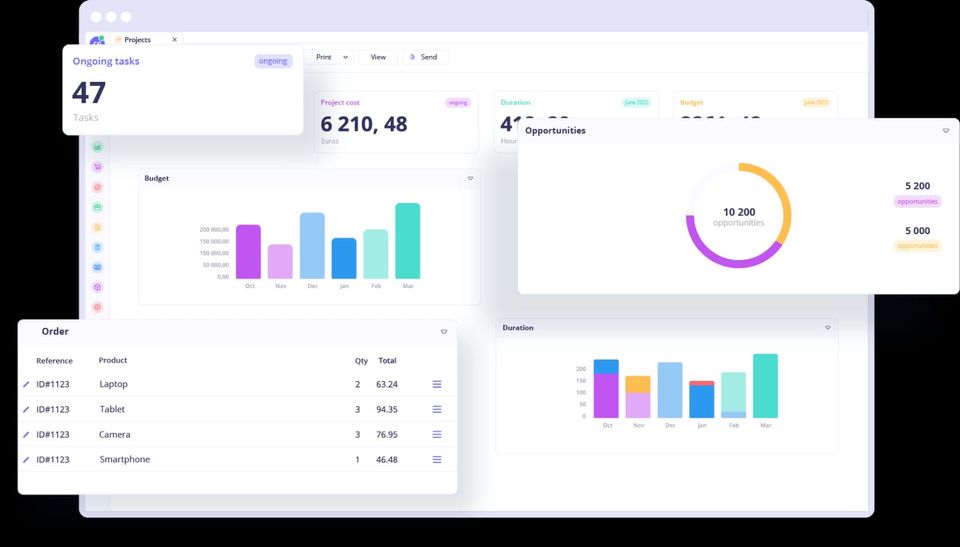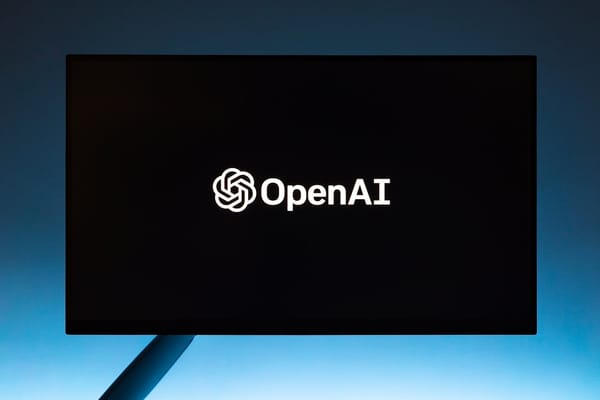How to optimize business processes with Axelor’s open source platform
Table of Content
Growing pains are something every business experiences at some point, regardless of size or industry. If your business is struggling with unstructured workflows, miscommunication between departments, or general feelings of stagnation and unproductivity, this is likely a sign you need a new solution to help optimize your business processes.
That’s where an open source enterprise resource planning (ERP) software comes in. If your business is scaling (or simply just changing!), an open source ERP can help your business improve its organization, communication, and business process management (BPM).
In this article, we’re explaining what open source software and ERP software are and how they can optimize your business processes. We’ll also go over how to pick the right ERP software for your business, and how Axelor’s affordable open source solution can meet your company’s needs—even as it grows and changes throughout the years. Let’s dive into it!
What is open source software and why does it matter?
When a software is “open source,” this means its original code is free and accessible, so others can change, enhance, and redistribute it. Open source software champions a spirit of open collaboration, community, and innovation.
Open source software helps companies improve their efficiency, ensure there’s flexibility to enhance the software as their needs evolve, and innovate faster thanks to the (sometimes global) community of developers collaborating on the same software.
Proprietary vs. open source software
So, what’s the difference between open source software and proprietary software (also known as “closed source software”)? When it comes to proprietary software, only the original team or creator can control and change it. Open source provides companies with certain freedom that proprietary solutions do not. With proprietary software, if a company decides to stop subscribing for commercial licenses or maintenance, they will lose access to the software. However, with open source software, companies have access to the source code, even if they decide to stop subscribing for commercial or maintenance licenses. This provides a level of flexibility and control that proprietary solutions cannot match.
As mentioned before, open source software promotes collaboration and rapid innovation. Compared to proprietary software, open source software offers you more control—you can customize it and enhance it to fit your exact needs.
Because open source often is accessible to the public, this actually makes it more stable and secure, since many users can iterate on and enhance the software faster than a proprietary software.
What is ERP software, and why does it matter?
ERP software is a data management solution that consolidates a business’s information from various departments—including customer relationship management (CRM), stock management, product management, accounting, and HR, for example—into one system.
ERP software can help your company automate its processes and daily operations, ultimately saving you a bunch of time and money and improving efficiency and productivity.
How to pick the right ERP software for your business
When choosing an ERP software for your business, flexibility is key. The ERP software you decide needs to fit your business’s needs now AND in the future, without breaking the bank.
This is why open source ERP software is such a great choice. An open source ERP software in particular grows as your business grows, so you don’t need to keep pouring your resources into different software as your business changes.
Here are some tips for picking the right open source ERP software for your business:
- Cost: Is the ERP software affordable? Are you getting a good value for your money?
- Customization: Ensure the ERP software can be customized to fit the needs of your business, both currently and in the future.
- Time: Consider how long it will take to set up, and if there’s training and support available to you and your team to make the process quicker and more seamless.
- Integrations: Can the ERP work with other applications and third-party devices that your business uses (or plans to use as it scales)?
The future is open source
The open source movement is only continuing to grow, with experts believing it will continue to overtake proprietary software in key industries, allowing for accelerated collaboration and innovation. Even Microsoft came out to say that open source software is now the “industry-accepted model for cross-company collaboration.”
More and more companies are hopping on the open source bandwagon, because it allows them to create and update features that fit their needs even if they’re rapidly growing. Post-pandemic, many companies see the value in the open source spirit, which underscores the importance of collaboration and communication without boundaries.
Now is the best time to invest in an open source solution for your company and take it to the next level—the future of business process optimization is in open source ERP software.
Benefits of using Axelor's open source solution for business process optimization
Now that you know how open source ERP software can help your business optimize its processes, let’s talk about an accessible, affordable, and easy option for your business: Axelor’s low-code, open source ERP software. Axelor believes in the open source spirit and engineered their open source solution to help companies like yours grow. Here are a few benefits:
1. Cost saving
Axelor’s software offers a range of cost-saving benefits. The open source nature of the solution means that companies can avoid expensive licensing fees and subscriptions. Secondly, the highly customizable software allows companies to tailor the solution to meet their specific needs, reducing the need to invest in multiple applications. Additionally, Axelor’s cloud-based solutions can help businesses save on hardware and IT infrastructure costs. Finally, the intuitive design of the software reduces the need for costly employee training programs, freeing up resources for other priorities.
And of course, Axelor ERP saves you major money by managing different tasks, documents, CRM, and workflows in one place, so you don’t need to purchase different tools.
2. Flexibility and customization
Because Axelor is open source and low-code, this allows for greater flexibility, fewer processing errors, and a reduction in development expenses by 30%.
You can quickly create customized business applications that fit the needs of your company, even as it grows and evolves throughout the years. Axelor ERP helps you save time you can put back into more productive tasks by automating processes unique to your industry.
3. Integration with other open source applications
In addition to Axelor products, you can connect Axelor ERP to a set of applications and external devices from third parties to fit your needs even better, while still managing everything in one place.
4. Greater transparency and security
Axelor has a high standard for security and keeps your data and information protected.
Axelor also helps promote transparency, optimization, and planning by giving real-time updates on all employee tasks, processes, documents, and company resources.
5. Community support
Axelor is passionate about fostering the open source spirit of innovation and community-building. All users of their open source platform can ask each other questions; provide resources; and create new technology, apps, and modules on their Axelor Forum.
How to implement Axelor's open source solution for business process optimization
Axelor constructed their open source solution to be accessible and easy to set up. In fact, it only takes an average of six months to implement Axelor ERP, which is lower than other software providers. Here’s what you can expect:
1. Assess business needs and goals
Before integrating Axelor ERP, conduct an audit of your company’s processes and analyze what’s working and what’s not. The key to success is understanding the problems you’re facing, your goals, and the needs of your employees—both in the present and in the future.
2. Customize Axelor to meet your business requirements
After identifying your business processes and pain points, the IT teams will customize Axelor ERP to meet your business needs. It can be difficult to know where to start with open source software, but Axelor’s team of experts make it easy to set up.
You’ll first need to set up, test, and deploy Axelor, and then migrate, reorganize, and centralize all the information and data from any tools you’re currently using into Axelor.
3. Train and support employees
For better results, offering training and support to your employees or any other users of Axelor ERP is important. Luckily, Axelor regularly offers training courses to help you understand and get the most out of it!
4. Measure and analyze results
In order to be successful in the long term, your company will need to measure, analyze, and iterate on its processes regularly. Axelor offers real-time support to help you re-optimize and evolve your processes, if necessary.
Next steps: Moving forward with open source software
Open source ERP software can help your business automate or reduce core business tasks; improve communication and performance between departments; level up its efficiency and productivity; and ultimately save time and money.
Axelor ERP’s flexibility and customizability make it an affordable and accessible choice, regardless of your business’s size or industry. Because Axelor is a low-code/no-code open source platform, it’s easy to set up to meet your business’s needs—even as it grows and changes.
To learn more about how Axelor can translate into growth for your company (and grow with your company), visit their website to learn more or try a free online demo.










